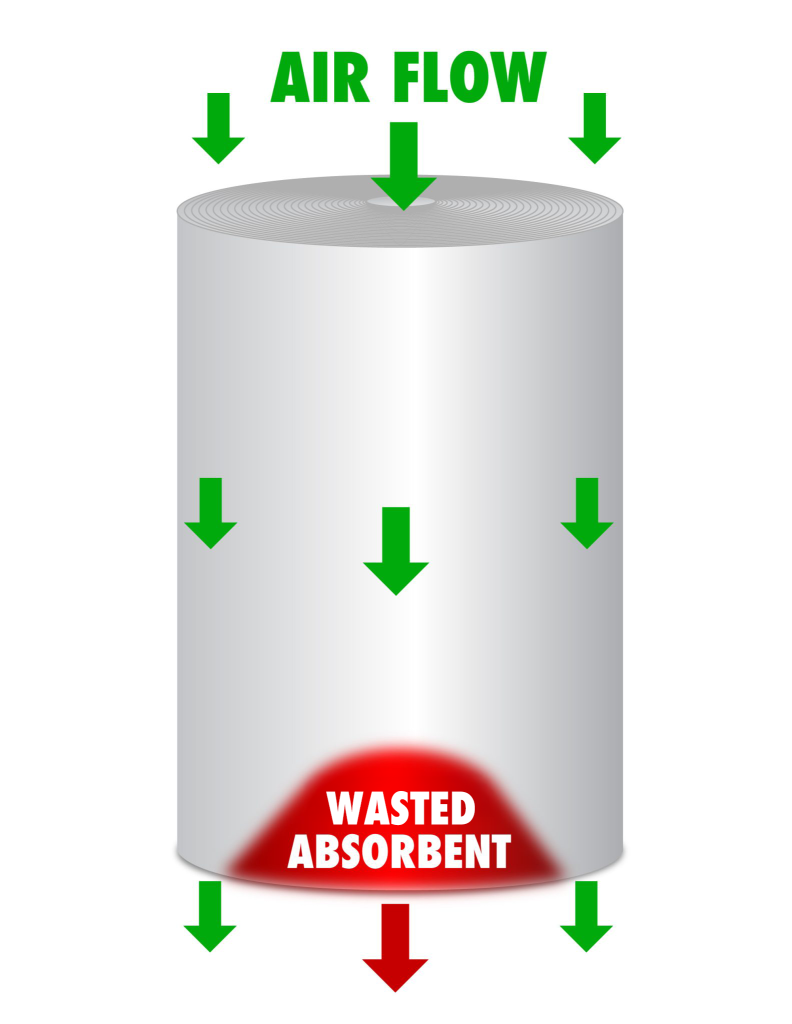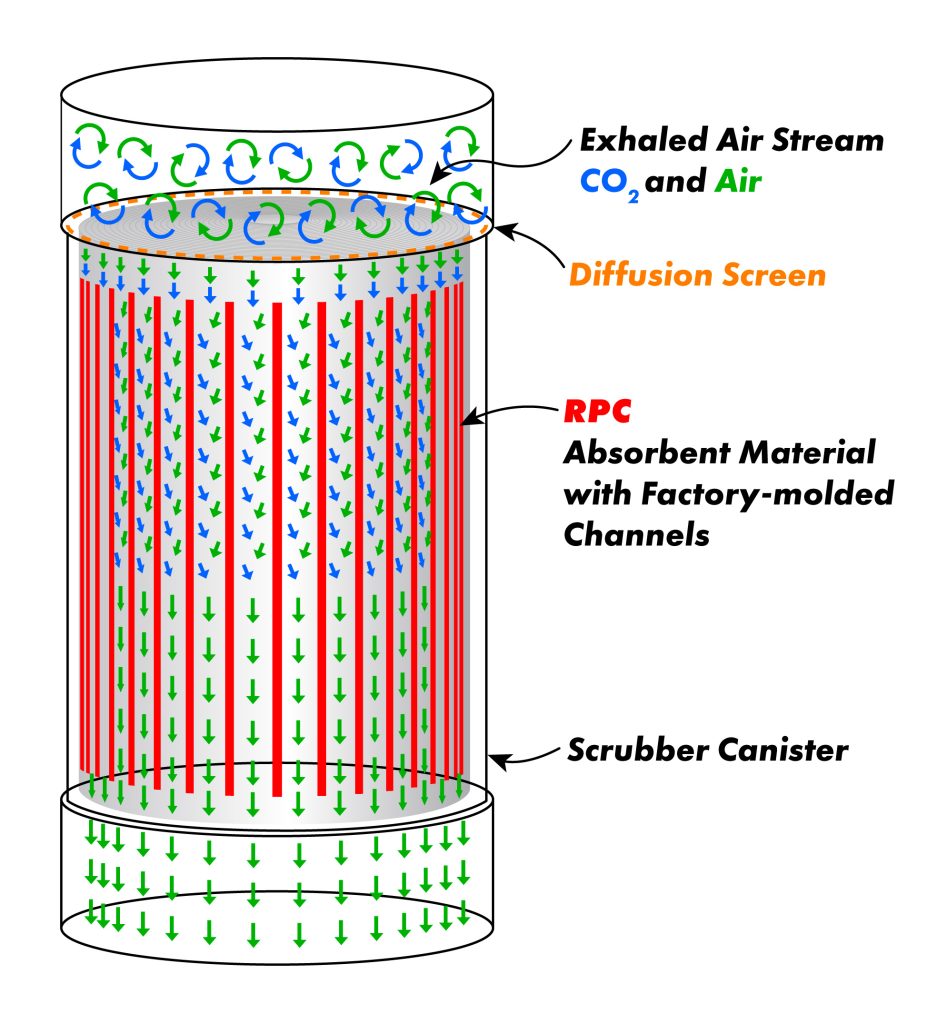(Information from www.microporeinc.com)
ExtendAir® adsorbent technology is a combination of a microporous gas adsorbent sheet and the geometry in which it is utilized. The adsorbent material is manufactured with a proprietary process into a microporous sheet that can be made into different thicknesses and widths, using the same chemistry as in granular adsorbents.

Sheets of adsorbent material are wrapped around a core to form an ExtendAir® cartridge. The molded ribs in the material create channels through which the breathing gases flow. One of the unique features of an ExtendAir® cartridge is that the breathing resistance of the adsorbent can be precisely controlled by varying rib height and spacing. This controlled channeling of the breathing gases results in a very uniform reaction zone within the adsorbent.

In a granular canister, gases seek the path of least resistance through the bed. The flow pattern can be very random and will certainly vary from person to person. Learning to load a granular canister requires instruction to learn the proper technique. Optimal loading of the canister requires tapping to achieve a uniform bed of granules. This takes time and can cause dusting of the adsorbent. All of this leads to variations in duration, wasted adsorbent and the potential for “caustic cocktail”

In contrast to a granular system, ExtendAir® cartridges use channels, molded in at the factory, that remain constant and controlled by the manufacturing process. The user simply places the cartridge into the canister, without any need for tapping or shaking as the canister is being loaded. As such, the duration variability due to irregular granule settling patterns, as well as variability due to individual loading technique are completely eliminated. Eliminating this variability will directly translate into longer minimum duration, and a +/-5% variation in duration at any test condition (granules can vary up to +/-30%).
An important concept to understand with ExtendAir® cartridge technology is that the gas flow distribution through the cartridge must be uniform in order for the system to perform optimally. For example, one way to visualize flow through an ExtendAir® cartridge system is to take a bunch of soda straws in your hand (50 or so). What would happen if you blew air down through just a group of 5 straws? All of the air would flow down those five straws, and none of the air would flow through the other 45. The same thing would happen if you blew air into just one side of an ExtendAir® cartridge canister: all of the air would flow through that side only.
The end result of this uniform flow is full utilization of the adsorbent in the cartridge.
To achieve full adsorbent utilization, Micropore designs canisters to achieve a +/- 5% flow distribution at the inlet face of the ExtendAir® cartridge. This is accomplished through various engineering techniques such as diffusion screens and flow testing of the breathing loop. The result is a system engineered to perform consistently independent of individual loading techniques.
The combination of Micropore’s ExtendAir® adsorbent manufacturing process, along with the parallel flow cartridge design, turns out to be extremely efficient. Installing an ExtendAir® Cartridge (EAC) is relatively simple, and takes seconds to perform. The 02 injection tube runs through the center of the EAC and with the use of a plug any possibility of “CO2 Channeling” is prevented.


